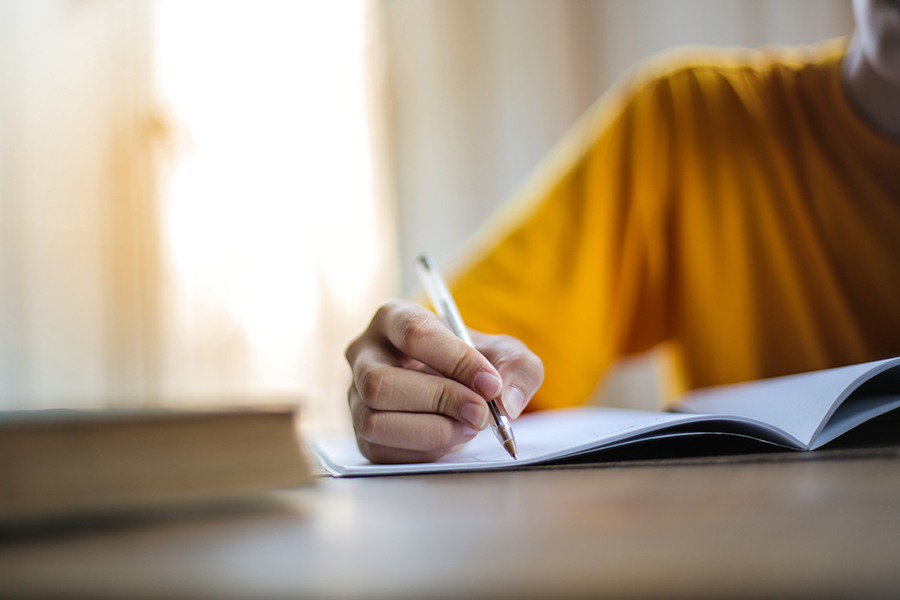- Home |
- Search Results |
- 9 different types of poetry
So, whether you want to try writing your own poems or just learn more about the art in general, we’ve put together a handy list of our faves to get you started.

Haiku
The haiku (or hokku) is an ancient form of Japanese poetry that has become very popular all over the world. Renowned for its small size, haikus consist of just three lines (tercet); the first and third lines have five syllables, whereas the second has seven. Haikus don’t have to rhyme and are usually written to evoke a particular mood or instance. So, you can have a lot of fun with them! You may have written or will find yourself writing your own haiku at some point in school, or you can get creative and try it at home, too.
Free verse
Free verse is a popular style of modern poetry, and as its name suggests there is a fair amount of freedom when it comes to writing a poem like this. Free verse can rhyme or not, it can have as many lines or stanzas as the poet wants, and it can be about anything you like! So, while free verse may sound simple enough, the lack of rules makes this form of poetry tricky to master!
Sonnet
This very old form of poetry was made famous by none other than William Shakespeare, but the sonnet actually originated in 13th century Italy where it was perfected by the poet Petrarch. The word ‘sonnet’ is derived from the Italian word ‘sonnetto’ which means ‘little song’. Traditionally, sonnets are made up of 14 lines and usually deal with love. As a rule, Petrarchan (Italian) sonnets follow an ABBA ABBA CDE CDE rhyme scheme, whereas Shakespearean (English) sonnets are typically ABAB CDCD EFEF GG. But of course, rules are made to be broken!
Acrostic
Like haikus, you’re likely to encounter acrostic poems at school! But that doesn’t mean they’re boring – in fact, far from it! This type of poetry spells out a name, word, phrase or message with the first letter of each line of the poem. It can rhyme or not, and typically the word spelt out, lays down the theme of the poem. Why not try it with the silliest word you can think of – it can be really fun!
Villanelle
The villanelle is another very old form of poetry that came from France and has lots of rules. It is made up of 19 lines; five stanzas of three lines (tercet) each and a final stanza of four lines (quatrain). As you can see from the rhyme scheme; ABA ABA ABA ABA ABA ABAA, this type of poem only has two rhyming sounds. Plus, there is a lot of repetition throughout the villanelle. Line one will be repeated in lines six, 12 and 18; and line three will be repeated in lines nine, 15 and 19. So although this takes out the extra work of having to write 19 individual lines, the real challenge is to make meaning out of those repeated lines!
Puffin Classics
Explore our timeless classics, for every child.
Limerick
Limericks are funny (and sometimes rude!) poems which were made popular by Edward Lear in the 19th century. They have a set rhyme scheme of AABBA, with lines one, two and five all being longer in length than lines three and four. The last line is often the punchline. Their sound is very distinctive, it’s likely you’ve heard or read one before!
Ode
The ode is one of the oldest forms of poetry and believed to have come from ancient Greece. Yep – yonks ago! The word ‘ode’ is derived from the Greek word ‘aeidein’ which means ‘to sing or chant’, and these poems were originally performed with a musical instrument. An ode is typically written to praise a person, event or thing (you could write an ode to your pet or favourite food!) and they are usually quite short in length.
Elegy
An elegy doesn’t have rules like some of the other forms of poetry but it does have a set subject: death – eek! They are usually written about a loved one who has passed away, but can also be written about a group of people, too. Although they can sound sad, elegies often end on a hopeful note, hooray!
Ballad
The ballad is another old and traditional form of poetry that typically tells a dramatic or emotional story. They came from Europe in the late Middle Ages and were initially passed down from one generation to another, and often with music. Ballads do have a set form; they are typically four lines (quatrain) and have a rhyme scheme of ABAB or ABCB. However, this form is looser than others so can be modified to suit a writer’s (that’s you!) needs. Most modern pop songs you hear nowadays can be referred to as ballads!

A short poetry glossary
Stanza = a set amount of lines in poetry grouped together by their length, meter or rhyme scheme.
Couplet = a two-line stanza.
Tercet = a three-line stanza.
Quatrain = a four-line stanza.
Cinquain = a five-line stanza.
Sestet = a six-line stanza.
Meter = the pattern of stressed syllables (long-sounding) and unstressed syllables (short-sounding) in poetry.
Rhyme scheme = the pattern of rhyme that comes at the end of each line or verse.
Syllable = the single, unbroken sound of a spoken or written word.
Poetry books
What did you think of this feature? Is there anything you’d like to see more of on the website? Send any suggestions to: childrenseditor@penguin.co.uk